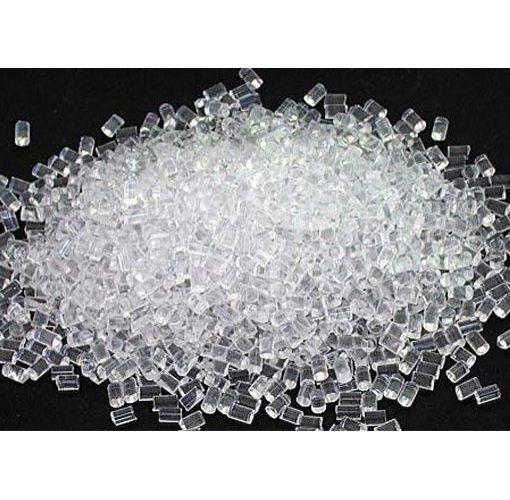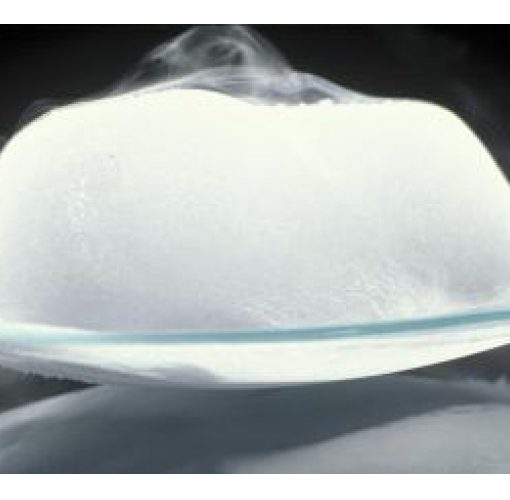Extinction principle and application of extinction powder related to extinction agent, semi gloss or matte powder coating is sometimes required according to its application. In order to reduce the gloss of the film, the commonly used matting agents include ultra-fine silica, talc powder, aluminum stearate, calcium stearate, low molecular weight thermoplastic resin, etc. To obtain the extinction effect, the following methods can be used: A. mix the powder coatings with different curing speeds with the dry mixing method, then the gloss of the obtained coating film will be significantly reduced and play the role of extinction. Due to the rapid curing of powder coating with high reaction activity, the resin leveling and reaction with slow curing of continuous phase are hindered, and the final cured film loses luster. Although this method is effective, it increases the manufacturing process and cost. b. Add thermoplastic resin. The matting powder coating can be obtained by adding cellulose acetate to epoxy powder coating and fine powder low molecular weight polyethylene and polypropylene resin to polyester powder coating. The gloss of the coating film is affected by the manufacturing conditions. Because the addition of thermoplastic resin will affect the storage stability of powder coating, the addition amount is limited to 2 & mdash; 3%。 c. Use a special curing agent with matting effect. d. Add filler with matting effect. The addition of ultra-fine silica, talc and other fillers significantly reduced the gloss. In particular, the particle size of filler has a great influence on the gloss of film. The larger the particle size, the lower the gloss. It should be noted that increasing the amount of filler will reduce the flatness and mechanical strength of the film. In epoxy powder coating, the effect of calcium carbonate particle size on film gloss is shown in the table. Matting coatings can be obtained by adding ultra-fine silica and kaolin to acrylic acid and polyester powder coatings. In addition, extinction coatings can also be obtained by adding waxes such as polyethylene paraffin and hydrogenated castor oil. Principle and application of coating extinction in recent years, China’s coating industry is in the ascendant, and the total output of coating has also jumped to the forefront of the world, forming a related industrial group, which actively promotes the technological revolution and development in the field of traditional coating. During this period, high gloss bright coatings were deeply loved by consumers because of their bright color and brightness, and unified the coating market for a long time. However, with the continuous improvement of people’s living standards, on the one hand, consumers feel that the reflection of high gloss bright paint after film formation is more serious, which is harmful to people’s eyes; On the other hand, consumers’ aesthetic concepts are more and more inclined to leisure, fashion and personalization. Coupled with the booming demand of China’s automobile and home appliance industry. These factors have led to a sharp increase in the demand for low gloss coatings with soft appearance. At the same time, how to produce coatings with extinction performance has become a problem that coating designers must consider. I. gloss and influencing factors of gloss 1. Determination of gloss and gloss. Light reflection will occur when light is projected onto the surface of an object. The reflection ability of the object surface to light is called gloss. The gloss of different object surfaces is different. It measures the reflection ability of the object surface to light, which is called glossiness. Gloss is expressed as a percentage. The higher the gloss of an object’s surface, the stronger its ability to reflect light and the higher its brightness. The gloss is measured by photoelectric gloss meter. According to the gloss, coatings can be divided into bright, matte, matte and so on. Classification of gloss of coatings (60 DEG; Reflection gloss (i.e. the incident angle of light is 60 & deg;) For example: matte coating: gloss < 10%; Matte coating: gloss 15 ~ 60%; Bright paint: gloss > 60%. 2. Factors affecting gloss ① the roughness of the coating surface is closely related to the roughness of the object surface. When light hits the surface of an object, some will be absorbed by the object, some will be reflected and scattered, and some will be refracted. The smaller the roughness of the object surface, the more light is reflected and the higher the gloss. On the contrary, if the object surface is uneven, the scattered light increases, resulting in a decrease in glossiness. The roughness (H) of the surface of a bright object that can be felt by human vision can be calculated according to the formula: H = & lambda; / cosα Calculate the wavelength of light emitted by human beings& alpha; Is the angle of incidence. For example, the human firing angle is 60 DEG; When, H = 1.1 & mu can be calculated; m. When the surface roughness h of the object is greater than 1.1-mu; M, it will be uneven and the gloss will be reduced. ② In the film-forming process of the coating, after the coating is applied on the object surface, it is cured into a film through the volatilization of the solvent (for solvent-based coatings). The formation process of coating film is very important to the surface roughness and gloss of coating film. In the wet film stage, the volatilization rate of the solvent is controlled by the diffusion of the solvent on the film surface. When the volatilization rate of each component of the solvent is not different, it is possible to obtain a high gloss surface; On the contrary, when the volatilization rates of each component of the solvent are different in the wet film stage, it will make the polymer molecules tend to form curls, or even precipitate, into particles or clusters of different sizes, and the film surface is uneven. In the dry film stage, the volatilization rate of the solvent is mainly controlled by the diffusion of the solvent in the coating, which will also affect the roughness of the film surface. In addition, during the formation of the film, with the volatilization of the solvent, the film will become thinner and shrink, and some suspended heavy particles in the film will rearrange on the film surface, resulting in the unevenness of the film surface. ③ Particle size and distribution of pigments and fine materials particle size and particle size distribution of pigments (fillers) in coatings are one of the important factors affecting the gloss of coatings. It is found that when the diameter of pigment particles is less than 0.3-mu; M, high gloss coating can be obtained. The reason is: after the pigment particles dispersed in the coating are made into a certain thickness of film and dried, only the pigment particles on the top layer protrude locally, and the particle diameter is less than 0.3-mu; The coating surface roughness caused by pigment ions of m shall not exceed 0.1 & mu; m。 When the average particle diameter of pigment is 3 ~ 5μ M, a film with good extinction effect can be obtained. In addition to the above three factors that can affect the gloss of the film surface, the volume concentration (PVC) of the pigment, the dispersion of the pigment, the surface structure and surface reflection characteristics of the film will also affect the gloss of the film surface. Among them, with the increase of PVC of pigment, the gloss of coating surface first decreases, and a minimum value appears at the limit volume concentration (CPVC) of pigment, and then increases with the increase of PVC. When the type and amount of pigment are determined, the better the dispersion is, the higher the gloss of the film surface is. Second, the extinction of coatings is to reduce the gloss of the coating surface by using certain methods. 1. Extinction principle combined with the mechanism of film surface gloss and the factors affecting gloss, it is considered that extinction is to use various means to destroy the smoothness of film, increase the surface micro roughness of film and reduce the reflection of light on film surface. It can be divided into physical extinction and chemical extinction. The principle of physical matting is: adding matting agent can make the surface of the coating uneven in the film-forming process, increase the scattering of light and reduce reflection. Chemical extinction is to obtain low gloss by introducing some light absorbing structures or groups such as polypropylene grafted substances into the coating. 2. Matting method ① matting agent in today’s coating industry, people generally use the method of adding matting agent. There are mainly the following categories: (1) metal soap metal soap is a commonly used matting agent in the early stage. It is mainly some metal stearates, such as aluminum stearate, zinc stearate, calcium stearate, magnesium stearate and so on. Aluminum stearate is the most widely used. The extinction principle of metal soap is based on its incompatibility with coating components. It is suspended in the coating with very fine particles, which are distributed on the surface of the coating film during film formation, so as to produce micro roughness on the surface of the coating film and reduce the reflection of light on the surface of the coating film( 2) Wax wax is an earlier and more widely used matting agent, which belongs to organic suspension matting agent. After the coating construction, with the volatilization of the solvent, the wax in the coating film precipitates and is suspended on the surface of the coating film with fine crystals to form a rough surface scattering light and play the role of extinction. Wax as a matting agent is characterized by simple use, and can give the film good hand feeling, water resistance, damp heat resistance and anti fouling. However, after the wax layer is formed on the film surface, it will also prevent the volatilization of solvent and the infiltration of oxygen, affecting the drying and recoating of the film. The future development trend is to synthesize polymer wax and silica to obtain the best extinction effect( 3) Functional fine pigments, such as diatomite, kaolin and fumed silica, are functional fine materials specially used as matting agents. They belong to inorganic filling matting agents. When the film is dry, their small particles will form a micro rough surface on the film surface to reduce the reflection of light and obtain an extinction appearance. The extinction effect of this kind of matting agent is restricted by many factors. Taking silica as an example, when it is used as a matting agent, the pore volume, average particle size and particle size distribution, dry film thickness and whether the particle surface is treated will affect its matting effect. The results show that the extinction performance of silica with large pore volume, uniform particle size distribution and matching particle size and dry film thickness is better. In addition to the above three commonly used matting agents, some dry oils, such as tung oil, can also be used as matting agents in coatings. It mainly uses the high reaction activity of conjugated double bonds in tung oil to make different oxidation and crosslinking speeds on the bottom of the film, so as to make the surface of the film uneven and achieve the extinction effect. In order to obtain low gloss, matting agent plays an irreplaceable role. However, it still has many defects to be improved in the process of use, such as the selection and application conditions of matting agent are relatively harsh; The company provides different matting agents according to the requirements of customers.


